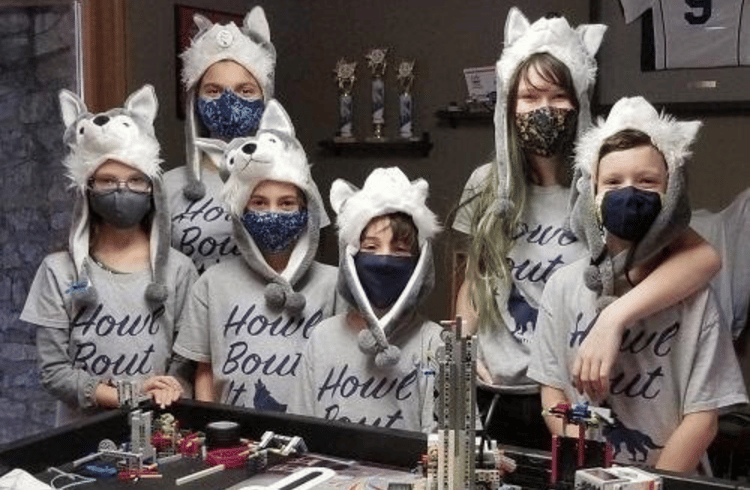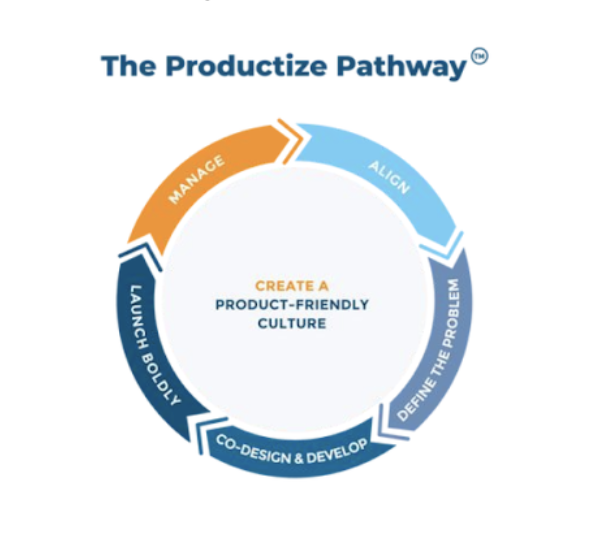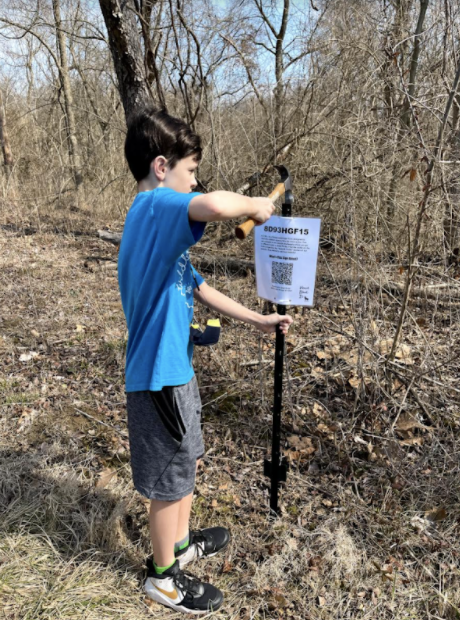Customer-Centric Innovation to Solve a Common Problem

For the past three years both of my kids have been involved in FIRST – For Inspiration & Recognition of Science & Technology – a global organization with robotics programs for kids ages 4-15, aimed at introducing children to STEM careers through fun, hands-on learning coupled with real-world problem-solving.
In addition to building and coding a robot, each year teams are challenged with an innovation project. This year their team (called Howl ‘Bout It) focused on a customer problem they see all the time: motivating kids to get more physically active. Every year I am reminded of our client work at Vecteris and find myself blown away by the customer-centric innovation approach these kids take when finding and implementing solutions to the problems they wish to solve.
The approach they take is very similar to the one we use at Vecteris with our clients to help develop scalable, renewable products; we call it The Productize Pathway™. If you are not familiar with it, there are 6 phases in the Pathway:

The Howl ‘Bout It team was demonstrating skills in all of these areas but, in particular, there were 4 key places where they really shined:
- Building a product-friendly culture,
- Conducting research to better define the customer problem,
- Designing and Developing an MVP to prove out their product, and
- Creatively launching the product.
1. Building a product-friendly culture
Creating a product-friendly culture was already embedded in the core values of the Howl ‘Bout It team; to be inclusive and innovative in making and sharing discoveries. This team started with a clear vision of where they wanted to go and kept returning to that vision to make decisions. They developed skill specialties across the team including coding, building, writing, and project management to name a few. Finally, all of their work was a collaborative team effort, driving the team’s ability to achieve success. And achieve success they did, going all the way to the FIRST World Invitational Competition.
Key Takeaway: Don’t neglect the team culture and how it impacts a team’s ability to effectively innovate.
2. Conducting research to better define the customer problem
The problem the team identified was a lack of motivation to exercise, particularly in kids ages 6-18. To better understand the problem and what motivates their target persona, they created surveys to learn more about the “voice of the customer”.
They found that kids most enjoy walking and running and are primarily motivated by friends. After brainstorming several potential solutions, the group selected a fitness scavenger hunt as the product that they would develop to address motivation and the lack of exercise. They named their product H.O.W.L., after their team name, HOWL ‘Bout It Outdoor Workout League.
Key Takeaway: Ground your ideas in real data on what your customer is experiencing and what will motivate them to change.

3. Designing and Developing an MVP to prove out their product
The H.O.W.L. fitness scavenger hunts would span parks across the city of Cincinnati. Kids would search for codes, and then scan and enter them online to receive points. Starting with an MVP to validate the proposed solution they found that 92% of the participants enjoyed the experience and would do it again, and 84% said it made them more active. Product revisions were made based on customer and partner feedback.
Key Takeaway: Test your ideas, as best you can, in real life to validate the concept and make it better.
4. Get Creative with your Launch Plan
With the MVP scavenger hunt a success, the team turned to their launch plan. Without the resources for a marketing budget they turned to local partners, such as Great Parks of Hamilton County to put their plan into action on a larger scale. They raised money through GoFundMe to develop a website and secure incentives for “top performers”. Upon product completion, H.O.W.L. workout scavenger hunt trails covered over 36 miles across 14 parks.
After the full product launch, the team continued to iterate and grow their product offering. They created a leaderboard and developed new challenges. They were fortunate to partner with the Cincinnati Reds, who have generously awarded Reds tickets to the top leaderboard winners each month as well as general participant ticket discounts.
Key Takeaway: If budgets are limited, explore how partners can help you reach a larger audience. Also, don’t stop at the MVP; be continually iterating to improve your product offering.
I hope this story of six enthusiastic kids and their “product” will inspire you to think about what new product best practices you can bring to your day-to-day work. If you aren’t quite sure where to start, take our Product Innovation Maturity Diagnostic to identify the best place to start and give us a call if you need help.
